10 Tourist Places In Aurangabad
By: Priyanka Maheshwari Sat, 01 July 2023 11:00:42
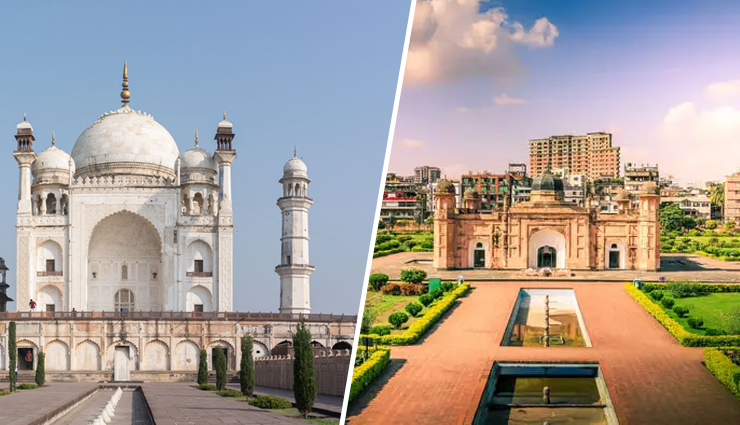
Aurangabad, located in the state of Maharashtra in India, is a city that is steeped in history and culture. Named after the Mughal emperor Aurangzeb, the city has a rich heritage and is known for its architectural wonders, ancient caves, and vibrant arts and crafts. The city is home to several architectural marvels that showcase the grandeur of ancient India. The Ajanta and Ellora Caves, both UNESCO World Heritage sites, are a testament to the exquisite craftsmanship and artistry of ancient times. These rock-cut caves display intricate carvings, sculptures, and murals that depict Buddhist, Hindu, and Jain art. If you're planning a visit to Aurangabad, here are 10 must-visit tourist places that should be on your itinerary:
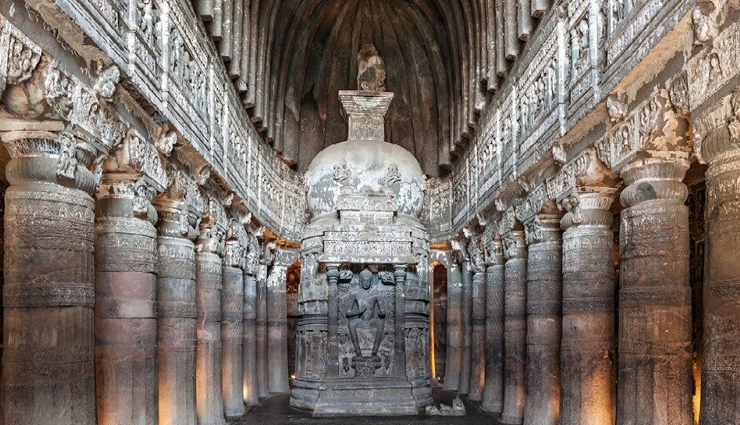
# Ajanta Caves
The Ajanta Caves, located near Aurangabad are a UNESCO World Heritage site and one of the most iconic ancient cave complexes in the world. Carved into the rock face of a horseshoe-shaped gorge, these caves date back to the 2nd century BCE and showcase remarkable Buddhist art and architecture.
The Ajanta Caves consist of around 30 Buddhist rock-cut caves that were created by masterful artisans using simple tools. These caves served as monastic retreats for Buddhist monks and were used as prayer halls and meditation chambers. Each cave is unique and features intricately carved facades, sculptures, and mesmerizing wall paintings.
The most striking feature of the Ajanta Caves is the exquisite paintings that adorn the interior walls. These murals depict scenes from the life of Lord Buddha, Jataka tales, celestial beings, and various other mythological and historical events. The vibrant colors, detailed brushwork, and storytelling narratives make the paintings a true masterpiece of ancient art.
Visiting the Ajanta Caves is like stepping back in time and immersing oneself in the spiritual and artistic heritage of ancient India. The serene surroundings, the sound of trickling streams, and the cool, dimly lit interiors of the caves create a tranquil atmosphere that adds to the mystical experience.
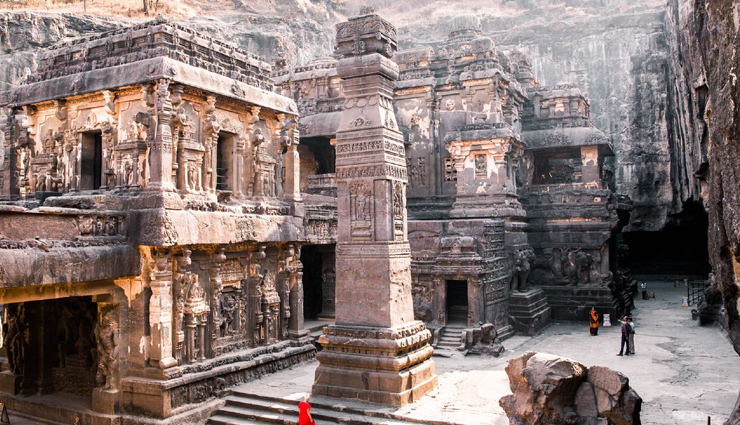
# Ellora Caves
The Ellora Caves are a remarkable UNESCO World Heritage site and a testament to the architectural and artistic brilliance of ancient India. These caves are an exquisite collection of rock-cut temples that showcase a harmonious blend of Hindu, Buddhist, and Jain art and culture.
The Ellora Caves were constructed over a span of several centuries, from the 6th to the 10th century CE. The complex consists of 34 caves, each with its own unique architectural style and religious significance. These caves were carved out of solid rock, with intricate details and impressive precision.
The temples at Ellora are divided into three groups: the Buddhist caves (Caves 1-12), the Hindu caves (Caves 13-29), and the Jain caves (Caves 30-34). Each group represents a different religious tradition and offers a glimpse into the diverse religious practices of ancient India.
The Buddhist caves at Ellora feature ornate pillars, prayer halls, and beautiful sculptures of Buddha and Bodhisattvas. The Hindu caves showcase elaborate carvings of deities like Lord Shiva, Lord Vishnu, and Goddess Durga. The Jain caves exhibit intricately carved statues of Jain Tirthankaras and symbols of Jainism.
The centerpiece of the Ellora Caves is the awe-inspiring Kailasa Temple (Cave 16). It is the largest monolithic structure in the world, carved out of a single rock. The temple is dedicated to Lord Shiva and is a marvel of ancient architecture. Its intricate carvings, massive pillars, and detailed sculptures make it a true masterpiece.
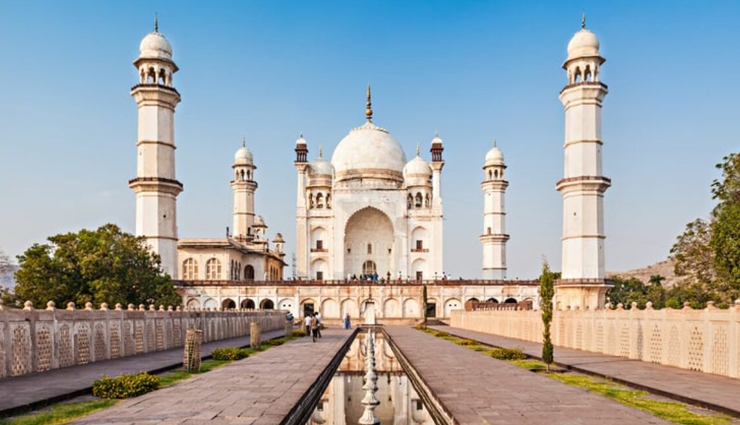
# Bibi Ka Maqbara
Bibi Ka Maqbara is a splendid mausoleum that bears a striking resemblance to the iconic Taj Mahal in Agra. Also known as the "Taj of the Deccan," it was built in the 17th century by Emperor Aurangzeb as a tribute to his wife, Dilras Banu Begum.
Bibi Ka Maqbara is renowned for its stunning architecture, intricate detailing, and delicate ornamentation. The mausoleum is built on a raised platform and features a symmetrical layout, with four minarets adorning its corners. The central dome, made of white marble, stands tall and is surrounded by smaller domes, arches, and decorative motifs.
The interior of Bibi Ka Maqbara is adorned with intricate carvings, floral patterns, and beautiful calligraphy. The grand central chamber houses the tomb of Dilras Banu Begum, while other chambers and corridors add to the overall architectural splendor of the monument.
While the mausoleum bears similarities to the Taj Mahal, it also incorporates local architectural influences, reflecting the artistic fusion of Mughal and Deccan styles. The serene surroundings, including lush gardens and reflective pools, further enhance the beauty and charm of Bibi Ka Maqbara.
Visiting Bibi Ka Maqbara is a journey into the Mughal era, where you can appreciate the architectural grandeur and pay homage to the love and affection that inspired its creation. The monument is not only a significant historical site but also a popular tourist attraction, drawing visitors from around the world.
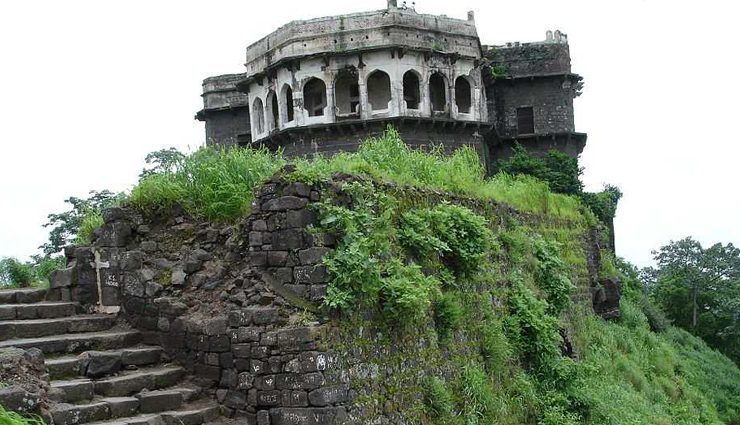
# Daulatabad Fort
Daulatabad Fort is a formidable fortress that has witnessed centuries of history and witnessed the rise and fall of several dynasties. Originally built in the 12th century by the Yadava dynasty, it has served as a strategic stronghold for various rulers over the centuries.
Perched atop a hill, Daulatabad Fort offers a commanding view of the surrounding landscape. Its location and intricate defense mechanisms make it an architectural marvel. The fort is surrounded by high walls and a deep moat, which served as effective deterrents against enemy attacks.
The fort's most distinctive feature is its complex and ingenious defense system. It is accessed by a series of gates, including the impressive "Chand Minar" gate, which is adorned with intricate carvings and serves as the main entrance. The pathway leading to the fort is designed in a maze-like pattern, known as the Andheri, which posed a significant challenge for any invading army.
Once inside the fort, visitors can explore various structures and monuments, including the Jami Masjid, a grand mosque, and the Chand Minar, a 30-meter tall tower. The fort also houses ancient cannons, royal residences, and underground chambers that were used for various purposes, including storage and as escape routes during times of war.
Daulatabad Fort is not only a testament to military architecture but also a witness to the region's rich history. It has changed hands multiple times, with rulers such as the Delhi Sultanate, the Mughals, and the Marathas, each leaving their mark on the fort's structure and design
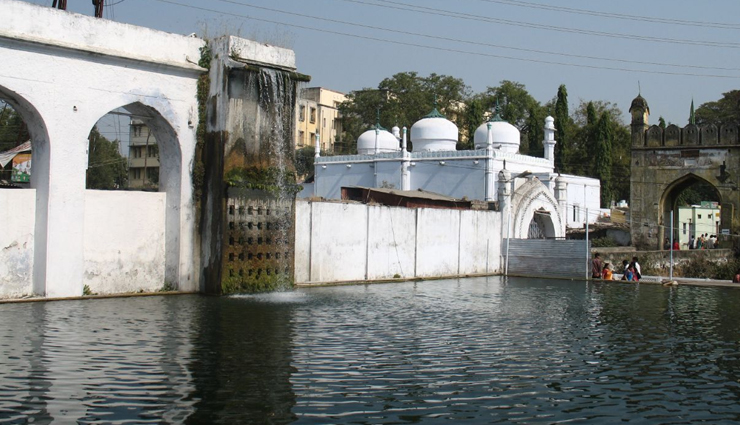
# Panchakki
Panchakki is an intriguing historical water mill that dates back to the 17th century. It is an architectural marvel that showcases the fusion of Persian and Indian architectural styles.
The word "Panchakki" translates to "water mill" in English. It derives its name from the mill's primary function of grinding grain using the power of water. The mill was designed to harness the energy from a nearby water source, known as the Mahmud Lake, to operate the grinding stones and other machinery.
Panchakki is not just a functional mill but also a spiritual and cultural complex. Adjacent to the mill, there is a beautiful mosque known as the Baba Shah Musafir Dargah. The Dargah is the tomb of the Sufi saint Baba Shah Musafir, who played a significant role in the development of Panchakki.
The architectural beauty of Panchakki lies in its intricate detailing and harmonious design. The water mill is adorned with Persian-style arches, domes, and decorative motifs, showcasing the influence of the Mughal and Persian architectural styles. The serene courtyard surrounding the mill adds to the peaceful ambiance of the complex.
Panchakki also features an underground water channel system known as "Naubatkhana," which transports water from a distance to the mill. The water channel system is an engineering marvel of its time and demonstrates the innovative techniques used to ensure a steady supply of water for the mill's operations.
Visiting Panchakki is a journey into the past, where you can witness the technological advancements and cultural influences that shaped the region. The complex offers a glimpse into the historical importance of water mills and their role in society.
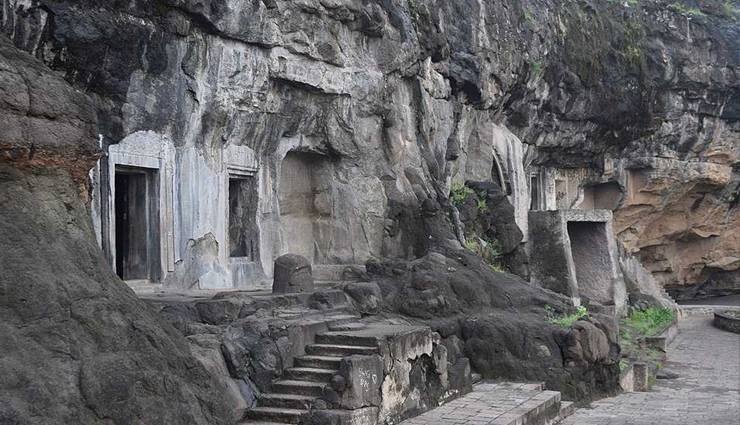
# Aurangabad Caves
Aurangabad Caves are a group of ancient Buddhist rock-cut caves that hold great historical and architectural significance. These caves were excavated during the 6th and 7th centuries CE and are a testament to the thriving Buddhist culture in the region during that time.
The Aurangabad Caves comprise a total of 12 caves, which are carved out of the volcanic rock of the Deccan plateau. These caves are divided into two distinct groups: the Western Group and the Eastern Group. The Western Group is the largest and most well-preserved, consisting of Caves 1 to 5, while the Eastern Group includes Caves 6 to 10.
The caves are known for their intricate carvings, beautiful sculptures, and ancient inscriptions. They showcase the skilled craftsmanship and devotion of the Buddhist monks who once inhabited them. The caves also reflect the influence of various architectural styles, including Buddhist, Hindu, and Jain, indicating a cultural amalgamation in the region.
The highlight of the Aurangabad Caves is Cave 7, also known as the "Tiger Cave." It features a magnificent facade with intricate carvings of tigers, hence the name. The cave also houses a beautifully carved chaitya hall, which was used for Buddhist rituals and worship.

# Siddharth Garden and Zoo
Siddharth Garden and Zoo is a popular recreational space that offers a delightful blend of lush greenery and diverse wildlife. It is a haven for nature lovers, families, and wildlife enthusiasts, providing a refreshing escape from the bustling city life.
Spread across a sprawling area, Siddharth Garden serves as a picturesque retreat adorned with vibrant flowers, manicured lawns, and tall trees. The garden provides a serene ambiance, making it an ideal spot for leisurely walks, picnics, and relaxation. Visitors can take in the fragrant floral displays, enjoy the soothing sounds of nature, and bask in the tranquil atmosphere.
The zoo section of Siddharth Garden is a major attraction, housing a variety of animal species from around the world. From majestic lions and graceful deer to playful monkeys and colorful birds, the zoo offers a chance to witness the beauty and diversity of the animal kingdom up close. Visitors can observe the animals in their natural habitats and learn about their behaviors and habitats.
Siddharth Garden and Zoo also feature a mini-train ride, which is particularly popular among children. The train takes visitors on a joyous ride around the garden, allowing them to explore the surroundings in a fun and interactive way.
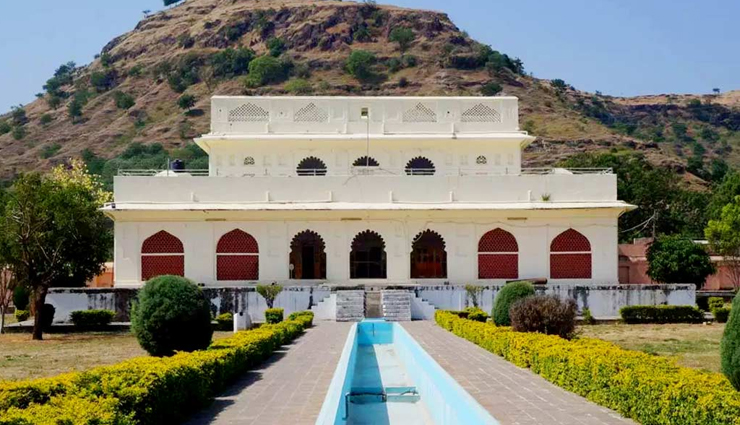
# Sunheri Mahal
Sunheri Mahal, also known as the Golden Palace. The Sunheri Mahal was originally built during the reign of Mughal Emperor Aurangzeb in the 17th century. It served as a luxurious palace and a residence for the royal family. The palace was adorned with intricate gold work, which earned it the name "Sunheri Mahal" or "Golden Palace."
The architecture of Sunheri Mahal combines elements of Mughal and Rajput styles, showcasing a fusion of artistic influences. The palace features exquisite carvings, ornamental arches, and intricate designs that embellish the facade and interior walls. Though the palace has suffered some damage over time, its architectural beauty and historical significance are still evident.
Sunheri Mahal is not only admired for its architectural splendor but also for its historical importance. It is believed to have served as a venue for important royal ceremonies and gatherings during the Mughal era. The palace holds a significant place in Aurangabad's history and stands as a reminder of the region's rich cultural heritage.
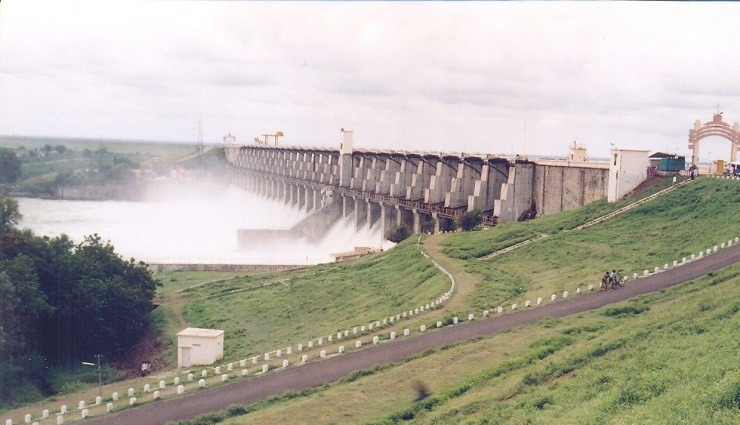
# Jayakwadi Dam
Jayakwadi Dam is one of the largest earthen dams in Asia and a significant water reservoir in the region. It stands as a testimony to human engineering and serves as a vital source of irrigation, drinking water, and hydroelectric power.
Built across the Godavari River, Jayakwadi Dam was completed in 1976 and spans an impressive length of about 10 kilometers. The dam's primary purpose is to store and regulate the flow of water from the Godavari River, ensuring a consistent water supply for agriculture and domestic use.
The reservoir formed by the dam covers a vast area and can hold a massive volume of water. It has a capacity of over 100 billion cubic feet, making it a crucial water source for the agricultural activities in the region. The water from the dam is used for irrigation, supporting the cultivation of crops such as sugarcane, cotton, and vegetables in the surrounding areas.
Apart from its irrigation benefits, Jayakwadi Dam also contributes to hydroelectric power generation. The dam has a power plant that harnesses the flow of water to generate electricity, providing a renewable and sustainable source of energy.
The picturesque surroundings of Jayakwadi Dam make it a popular spot for nature enthusiasts and tourists. The vast expanse of water against the backdrop of rolling hills creates a scenic view. Visitors can enjoy boating, fishing, and picnicking in the serene atmosphere of the dam.
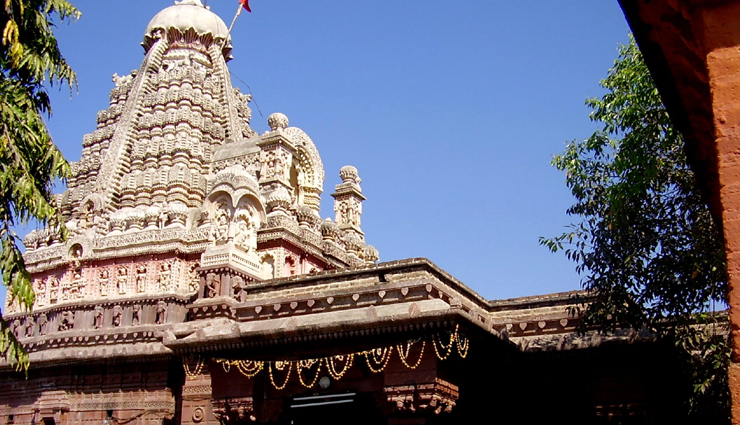
# Ghrishneshwar Temple
Ghrishneshwar Temple, also known as the Ghrushneshwar Jyotirlinga Temple, is a revered Hindu pilgrimage site located in Aurangaba. It is dedicated to Lord Shiva and holds immense religious significance for devotees.
The Ghrishneshwar Temple is believed to be one of the 12 Jyotirlingas, which are considered to be the most sacred abodes of Lord Shiva. According to Hindu mythology, the Jyotirlingas are self-manifested lingams (symbolic representation of Lord Shiva) that radiate divine light. The temple derives its name from the word "Ghrishneshwar," which means "Lord of Compassion" or "Lord of Fulfillment."
The temple's architecture showcases the intricate craftsmanship of ancient times. It features a beautiful blend of Maratha and Rajput architectural styles, with ornate carvings, exquisite sculptures, and intricate detailing adorning the walls and pillars. The temple's spire, adorned with intricate patterns and motifs, is a visual delight.
The sanctum of the Ghrishneshwar Temple houses the Shivalinga, the main deity of Lord Shiva. Devotees offer prayers, perform rituals, and seek blessings from Lord Shiva for fulfillment of their wishes and spiritual well-being. The temple premises also include other smaller shrines dedicated to various deities of the Hindu pantheon.
The Ghrishneshwar Temple attracts a large number of devotees and pilgrims throughout the year, especially during the auspicious occasion of Mahashivratri. The temple complex is bustling with religious fervor and devotion during these times.





